
LandRoller skates have quite a history. Read about the process of trial and error that led to the development of the Landroller skates you know and love
In the spring of 1995, two inventors, Bert Lovitt and Warren Winslow began working together to develop an all terrain skate. Winslow was an avid skater and a skier. He lived on a farm in Northwestern Illinois and wanted some kind of wheeled ski he could wear so that his dogs could pull him around his farm.
His idea was to take a pair of skis, cut them off short and put large wheels at the ends of each ski. Sort of like a scooter for each foot.
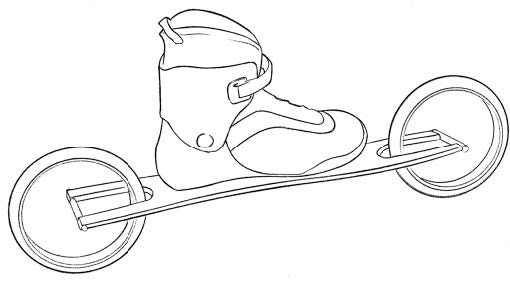

Lovitt, who lived in Los Angeles, was not a skater but as an inventor, he didn’t like the “scooter for each foot” idea. It was not elegant and could not be patented. He suggested that they take a pair of large hub-less wheels and put a ski boot on rollers inside the rim of each wheel.
But this concept demanded a radical innovation. In order for a skater to put his foot inside the boot, the wheels would have to be inclined.

Winslow liked the idea. “It was just so crazy, it might work”. The large wheel would easily roll over most of the terrain on his farm.
They decided to move forward. Winslow started work in his machine shop to build their first set of prototypes.
The first prototypes worked, in a fashion. The boots did roll freely inside the large hub-less wheels but you had to be a circus performer in order to skate with them. The “skates” were wildly unbalanced. Basically, it was like having a unicycle strapped to each foot.

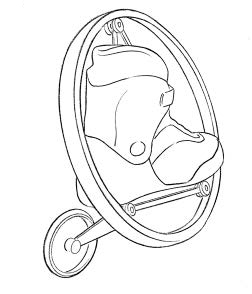
They decided to put a small wheel in the back of each skate for balance.
The improvement worked but the small, rear balance wheels were absorbing most of the skater’s weight while the big hub-less front wheels rolled freely along. They took the small balance wheels off the back and put them on the front.


The new models almost worked but the weight of the skater deformed the hub-less wheels enough to cause the rollers to bind and stick.
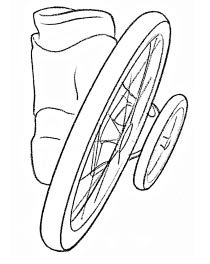
There was just too much friction in the system. Eventually, after a few more models, they agreed to replace the rear, hub-less wheels with spoke wheels from a children’s bicycle.
They still needed to keep the wheels inclined in order to maintain a reasonable center of gravity and balance.

At this time, because Lovitt was not a skater and because he lived so far away from Winslow, he enlisted the help of his good friend Erik Van der Palen to help him evaluate the skate. Van der Palen was an excellent skater and a successful industrial designer.
Van der Palen thought that the new models rolled great but were so large and heavy that they were only practical for going down hill. He was not impressed.

Lovitt was convinced that to be economically viable, the new invention would have to be lightweight and maneuverable, more like a skate than a ski. He decided to stay with it and try again. Maybe they didn’t need such a big wheel. Maybe they didn’t need such a long wheelbase. He also decided to keep Van der Palen involved with the project. He thought that if he could eventually please his no nonsense, skeptical friend, he could be sure that the angled wheel technology had true value.
The two inventors decided to build a new pair of skates with two 8- inch, air filled tires on each skate. Because the rear wheels were much smaller, they could put both wheels closer together on a smaller frame.
They continued to incline both wheels in order to maintain balance.
It worked! They now had a skate that could glide over dirt roads, grassy slopes, cracked pavement and smooth surfaces. Not only did it work well, but Van der Palen thought that the air-filled tires made it the smoothest riding skate he had ever tried. There were other problems. The skates were still too heavy and some what unwieldy. The front wheel at 8 inches was still too big. It extended too high above the boot and restricted a skater’s ability to cross over. They were not there yet.
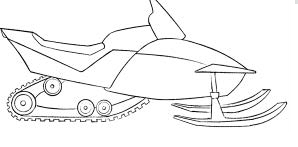
Winslow set out to build a set of lightweight 8-inch and 6-inch wheels in his shop, but was having a difficult time.
The final design break through took place when Winslow, went skiing. He noticed a ski patrol on a snowmobile. Inside the treads of the snowmobile he saw several sets of suspension wheels. Some wheels were 7 inches in diameter and others were just over 5 inches in diameter.
They bought a few sets of the snowmobile wheels and Winslow made a new pair of frames to hold them onto the bottom of a pair of in line skate boots. Of course they still had to keep the wheels inclined.
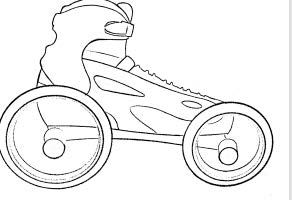 Now they finally had what they were striving for. Not only did the new wheel configuration perform beautifully, it also just happened to look great, and yet, no one had ever really drawn up a set of plans. The new skate had just evolved.
Now they finally had what they were striving for. Not only did the new wheel configuration perform beautifully, it also just happened to look great, and yet, no one had ever really drawn up a set of plans. The new skate had just evolved.
When Van der Palen field tested the new skates with other skaters they discovered that the skates could handle many more surfaces than in line skates and on a smooth surface, the new skates were more fun than in lines. Surprisingly, they were also much more stable.
After three long years the two inventors had finally brought their dream to life. Little did they know that this was just the beginning. Sure, they had invented a superior wheel configuration for skates. They had even started to call their new invention LandRollers.
But, as is often the case, none of the companies that made in line skates had any use for this new disruptive technology. They were all too involved with their own R&D to spend precious resources on someone else’s idea. The two inventers could never have imagined that it would take another five long years before they would be able to perfect their new technology and bring it to the world.
What happened during those next five years is a long storey. The essence of that story is simple. Because the two outsiders refused to fail, eventually they succeeded. Through dogged persistence and unrelenting faith in what they had created, they were slowly able to find the right partners. Those partners, with vision, patience and faith, would support them and empower them to eventually triumph over the experts and the naysayers.
Today, the LandRoller inclined wheel skate is a reality. Thousands of enthusiastic skaters are now enjoying its superiority. Now it’s your turn to continue the story. Put on a pair of LandRoller skates and go “landrolling” where no one else has ever skated before. Then write to us and tell us your story.


 Mojo Blue
Mojo Blue  Mojo Red
Mojo Red